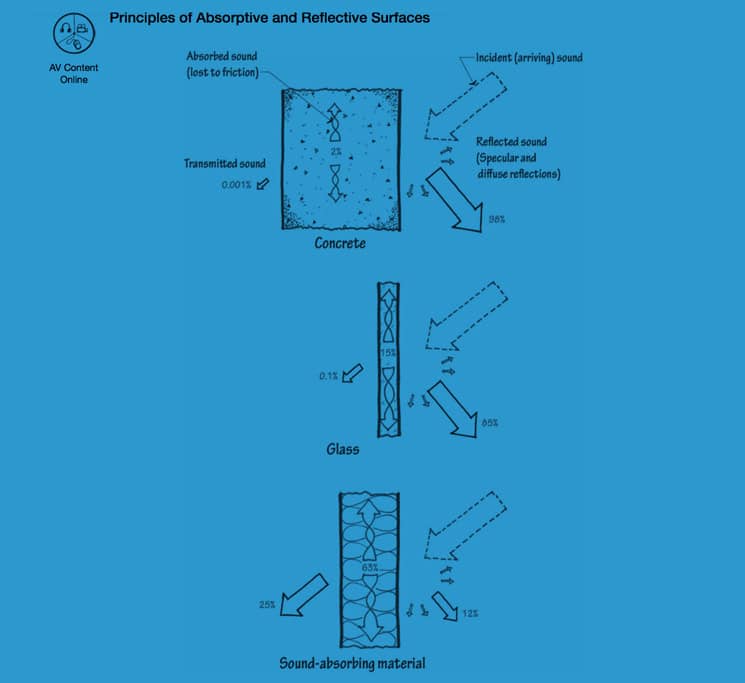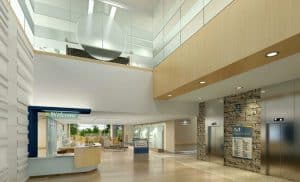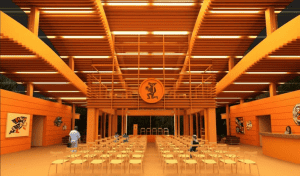Architects generally receive little, if any, education in acoustics. In formulating design goals for projects, acoustics is a low priority – except when it is fundamental to a building’s function (e.g. a concert hall). This is a missed opportunity. Great aural environments can be transcendental. Acoustics is the invisible art. When done well, spaces feel right – elevating one’s experience. Get it wrong and it can make buildings unfit for purpose. Poor acoustics can be expensive, difficult or impossible to correct once you have them. It requires integrated thinking from the start.
Raj Patel, Architectural Acoustics: A Guide to Integrated Thinking

Sound behaviour: why architects & designers need to know about it
Whether we’re discussing office towers, theatres, schools, houses, multi-family residential buildings, or hospitals, the acoustic characteristics of any enclosed space can profoundly impact the comfort and productivity of those within. The proper implementation of acoustic design principles is key to creating an environment that’s not only aesthetically pleasing but also conducive to occupant well-being.
And—particularly if you’re a music lover—you’ll agree that aesthetics encompass far more than what we see around us. Sounds have unique aesthetics of their very own, some more subjectively “pleasing” than others… But this is neither the time or place to tell you about that year my little brother tried to learn to play violin in grade school.
In Part 1 of this series, we noted that the branch of acoustical engineering known as architectural acoustics refers to both the study and control of indoor sound behaviour, and most acoustical consultants credit American physicist Wallace Clement Sabine for pioneering their field in the late 1800s.

Naughty sound waves caught literally bouncing off walls!
Understanding the science behind the behaviour
When sound—audible pressure wave energy moving through air or any other medium—impinges on a building interior surface, some of the energy passes through it, some is absorbed, and some is reflected.
Absorbed sound energy turns into heat within the surface material, but you can’t actually heat up a wall hot by yelling at it…which is really too bad. I mean, we could mitigate both energy AND psychological crises through primal scream therapy!
“It’s not that much heat,” explains an Amber Book video narrator in Architectural Acoustics 1 of 4: Sound and Building Materials.
When impinged upon by sound energy, molecules that form a given building material move around; and as they rub together, they lose some of that energy through friction.
Finally, some of the sound energy is reflected. All three reactions—transmission, absorption, and reflection—occur simultaneously,.
My dear Watson, material is anything but immaterial!
The reverberation of noise (aka unwanted sound) from walls and ceilings essentially amounts to sound waves reflecting off surfaces—just like a ball bouncing around inside a squash court. The more reflective the receiving surface, the longer it takes for sound to fade away or “decay“, and we perceive this phenomenon as “noisy” or “echo-y”… not to mention downright annoying when accompanied by your squash opponent’s victorious woo-hoos!
Acoustically absorbent materials, on the other hand, help dampen reverberance levels in indoor spaces, thereby reducing excessive sound build-up and echo.
All materials transmit, absorb & reflect sound:
This is a function of the material mass, surface smoothness, fibre orientation, porosity, air tightness, and stiffness.

Examples of building materials and how they affect the movement of sound include:
- Glass. Characterized by low mass and negligible pores, glass allows very little transmission or absorption of sound but reflects a significant amount.
- Smooth concrete. With considerable mass and an airtight quality, this material also reflects high levels of sound energy while absorbing and transmitting very little.
- Concrete + a layer of fabric wrap glass fibre. Substantial mass mitigates sound wave transmission through the concrete layer, while the porous glass fibre layer absorbs that energy like steaming mashed potatoes do butter. As a result, very little sound is reflected or transmitted in this composite construction. And good job, mashed potatoes! You’re top-notch eating material.
The takeaway here? A good understanding of how building materials interact with sound waves—their order, orientation and type—is essential for architects and designers. Knowing which materials are best suited to various acoustic environments, along with their specific absorptive features, is crucial in designing occupant-friendly and purpose-aligned acoustic spaces.
In Part 3 of this series, we’ll delve a little further into sound wave characteristics, as well as look at strategies for helping architects and designers create acoustically purposeful indoor spaces to meet occupant needs and tangibly contribute to their well-being. Until then, may the good sounds be yours as you consider these closing words:
While it’s okay to be angry at misbehaving drywall, shouting at it will only p*ss off whoever’s on the other side. (Especially if said wall hasn’t been sound attenuated.) As for punching it? Well, that’s gonna hurt you way more than it’ll hurt the drywall!




